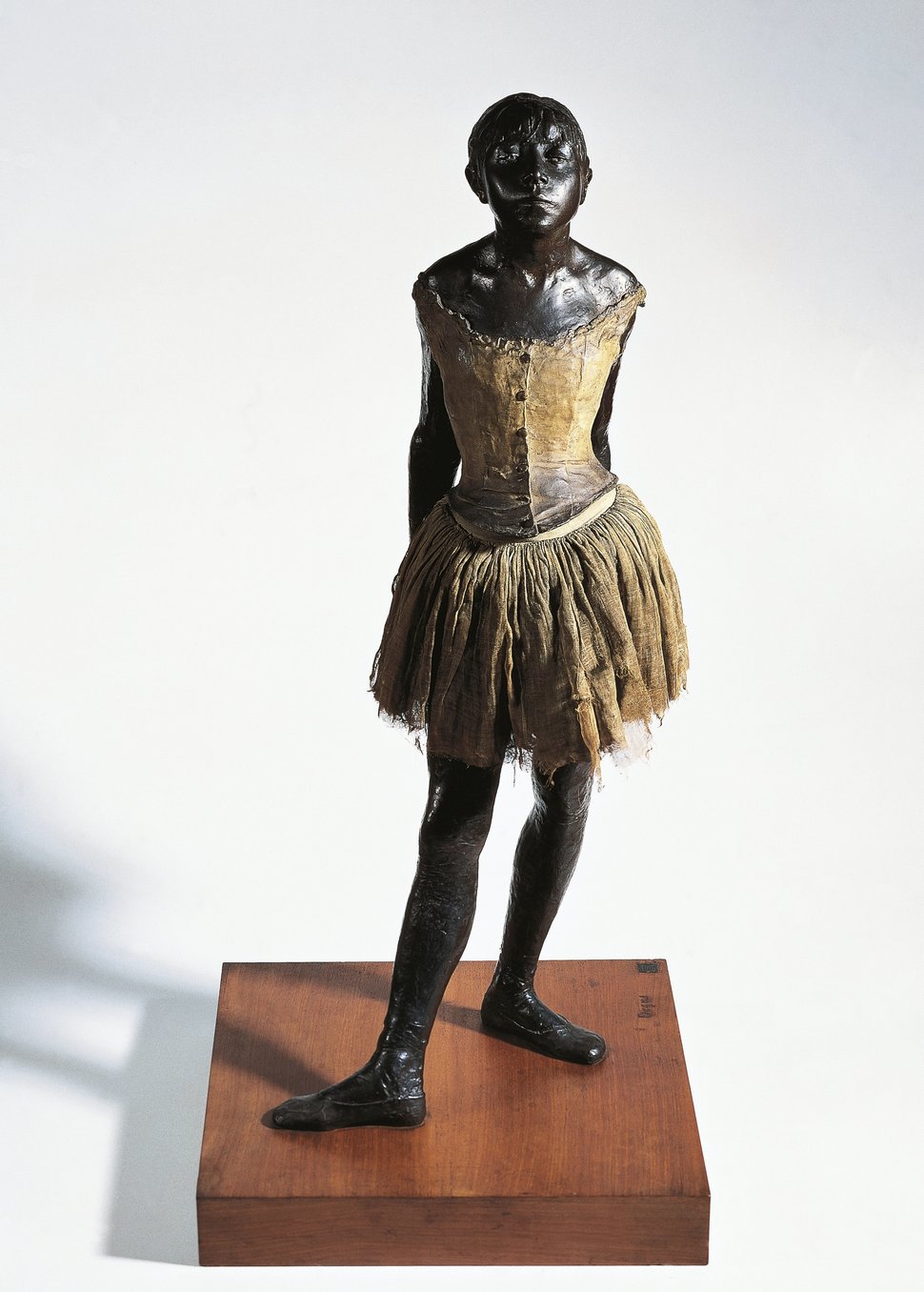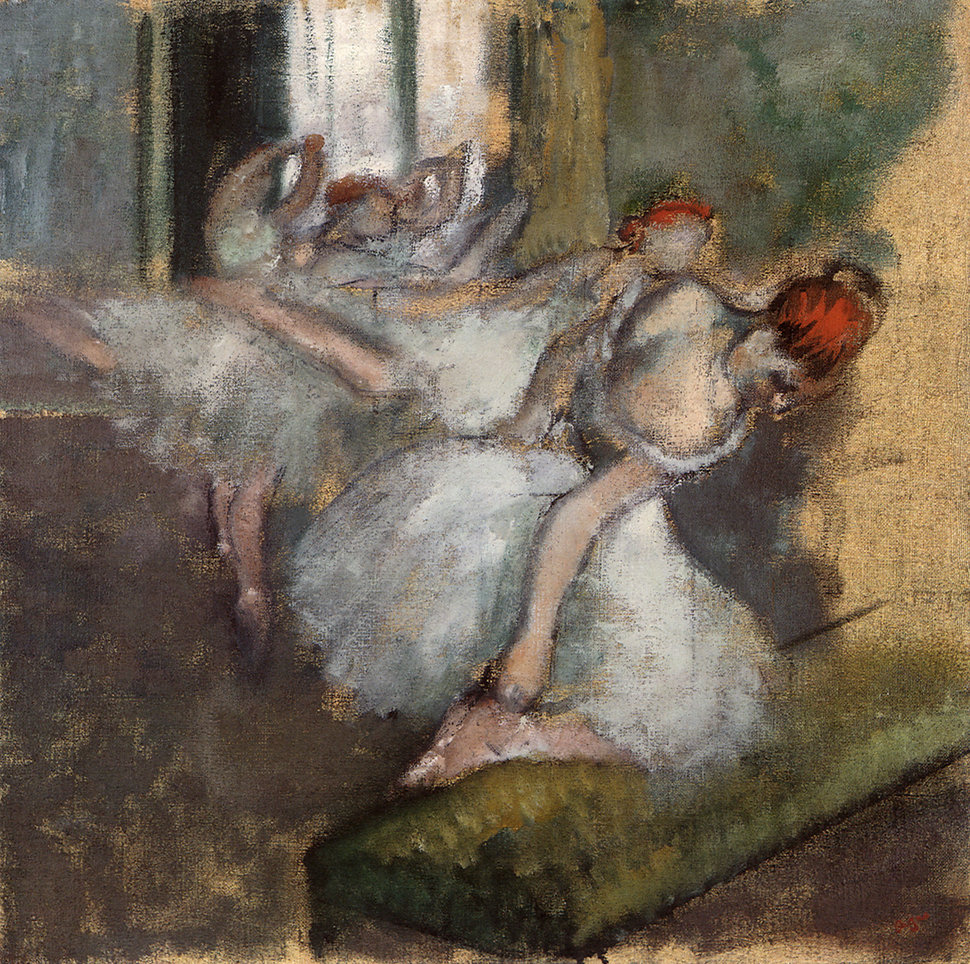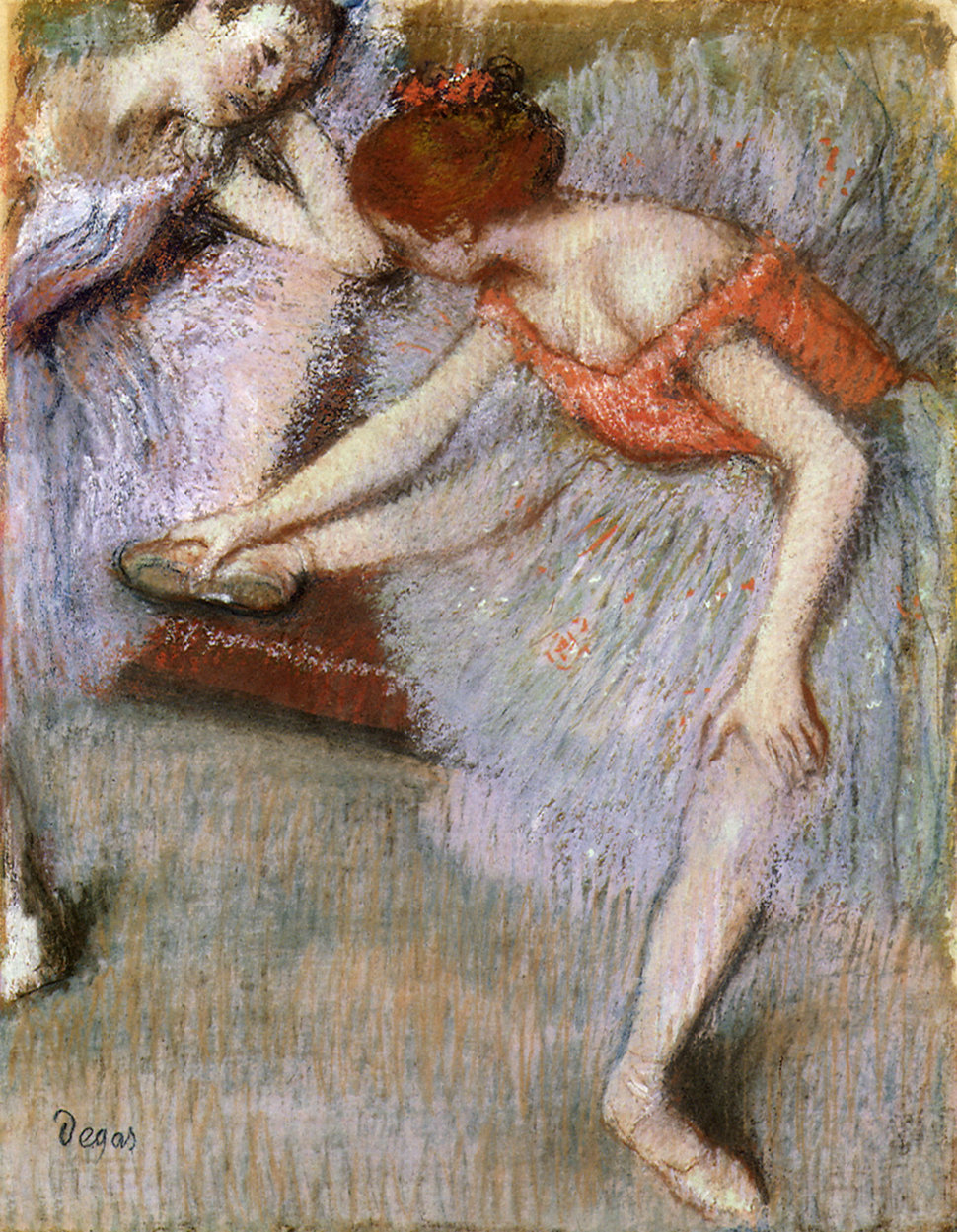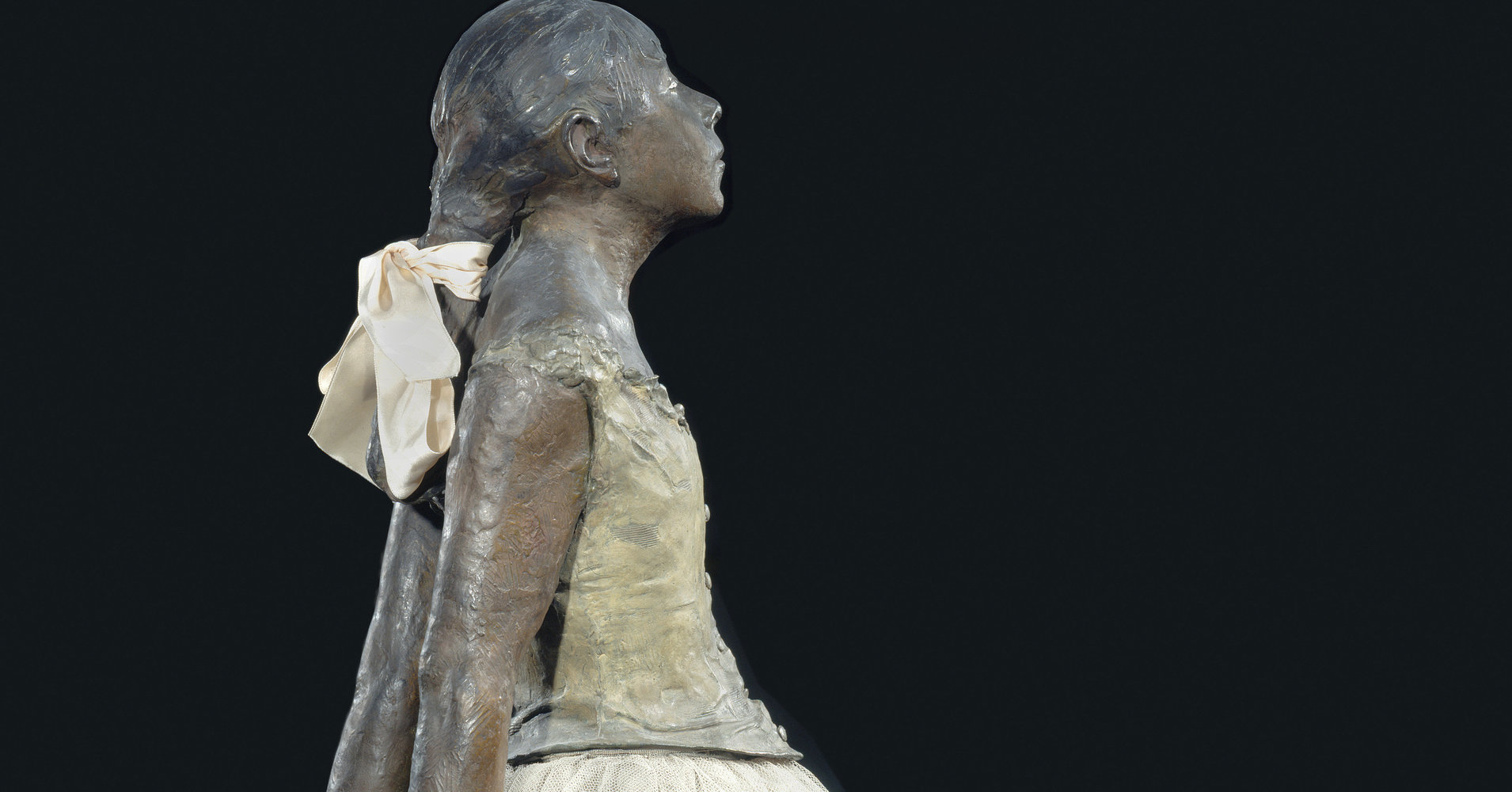[ad_1]
“Why do you say that de Gas [sic] can’t get hard?” Vincent van Gogh wrote to his friend, artist Émile Bernard, in 1888. “De Gas lives like a little law clerk and doesn’t like women, knowing that if he liked them and fucked them often, he would become deranged and inept at painting.”
In the letter, the “Starry Night” painter was referring to the French impressionist Edgar Degas, who famously depicted 19th-century ballerinas in moments between grand jetés and pirouettes, stretching and resting and adjusting leotards on canvases that today hang in The Metropolitan Museum of Art in New York City, Musée d’Orsay in Paris, The National Gallery in London and many, many other museums.
Less famously, he was a celibate misogynist who saw women as “‘human animals,’ females of the species.”
So explains author Camille Laurens in Little Dancer Aged Fourteen, a new book on the life of Degas’ most easily recognizable subject, whose name ― Marie van Goethem ― is nowhere near as iconic as the diminutive statue that depicts her in a perpetual fourth-position stance.
Laurens’ book arrives at a cultural moment when the morality of the artist-subject relationship has landed under heightened scrutiny. In December, two sisters penned a petition challenging the Met’s decision to exhibit a painting by the Polish-French modern artist Balthus, showing a 12-year-old girl in repose, her skirt upturned and her underwear exposed. The petition renewed a debate over the kind of conduct (between older, mostly male artists and historically young and female subjects) history is willing to not only condone but exalt.
Today, discussions about artists’ unsavory methods often revolve around sexuality and consent: whether artists abused their power in the process of creating art, engaged in sex that might not have been consensual and then used their creative practice as a shield to protect themselves.
Degas’ statue “Little Dancer, Age 14” poses a somewhat different idea of dynamics between artist and subject, though one similarly fraught with gendered power imbalances. Laurens posits that it’s highly unlikely Degas sexually abused 14-year-old van Goethem, because Degas was a well-documented celibate, his abstinence rooted in a disgust of womankind. But that disgust, Laurens argues, is a forgotten aspect of the modern art pioneer’s story ― as is his role in ruining the life of a girl whose image helped propel him to fame in the first place.

DEA PICTURE LIBRARY via Getty Images
We don’t always know what occurred between painters and their subjects in the privacy of a studio, but some male artists have made it easy to surmise. “How lovely she was, naked in bed,” French Romantic painter Eugène Delacroix said about one 15-year-old subject. Another artist, Puvis de Chavannes, was known to end his modeling sessions by asking, “Would you like to see the … of a great man?” Laurens writes.
These men typify the predatory artist archetype at the center of today’s Me Too conversation, which could be used to describe men like Harvey Weinstein or, allegedly, Terry Richardson. But Degas’ abuse looked different. His is more familiar to pockets of the internet occupied by incels ― heterosexual, cellibate men who breed a distrust of and hatred for women.
Laurens traces Degas’ misogyny back to his youth, when he is thought to have contracted a venereal disease from a brothel. As an adult, Degas fraternized with few women aside from his housekeepers. He feared them, his friends believed, especially with regard to how they’d interfere with the quality of his work. His friend and fellow artist Jacques-Emile Blanche described him as “a misogynist and a surgeon” when he crafted van Goethem’s image. He was a voyeur who adopted the attitude of a father figure, a chauvinist critic who embodied the basics of toxic masculinity.
Over time, Degas’ painted odes to the Paris Opera have taken on the rosy glow of nostalgia, all that tulle and ribbonry obscuring darker intentions. His impressionist ballerinas adorn coffee mugs and hang in dorm rooms, as universally and unequivocally beloved as Claude Monet’s “Water Lilies.” In museums, young girls assume the dancers’ poses for cute photo ops. Yet when Degas painted ballerinas, he saw neither budding talent nor charming naiveté. He saw “little rats,” Laurens finds.
Girls who became ballerinas ― at as young as 8 years old ― worked 10 to 12 hours a day, six to seven days a week, under devastating conditions. (One ballerina died after her tutu lit on fire during a rehearsal.) After reaching “sexual maturity” at 13, girls were often paid to have sex with men waiting in the opera’s wings. They earned the nickname “rats” because the animals were known to transmit syphilis.
For Degas, the fact that young dancers had sex with old men read not as abuse on the part of the latter but as sin on the part of the former. He assumed girls’ transactions with powerful men meant they could pull strings from behind the scenes, a thought that elicited both horror and fascination. Degas clearly saw something vital in his recurring subjects, who spurred quotes from him like, “I have locked away my heart in a pink satin slipper.”

Picturenow via Getty Images
Degas’ disdain for women ― and ballerinas in particular ― is writ across “Little Dancer” itself, whose sculptural features were altered to emphasize van Goethem’s moral degeneracy. Degas subscribed to physiognomy, which presumes that criminal behaviors are passed on genetically and thus manifest in physical features. And so he flattened van Goethem’s skull and stretched her chin so she appeared especially “primitive,” a visual reflection of an internal state.
Made of pigmented beeswax, clay and metal armature, and dressed in genuine clothing and slippers, the sculpture was initially derided for resembling a common wax doll. The unvarnished ugliness Degas produced was a shock to the 19th-century art world at large. But the insults he endured were benign in comparison with those lobbed at the subject herself, who was described by an art critic as having a “sickly, grayish face, old and drawn before its time.”
Attitudes changed over the years, though, as is the case for so much art not appreciated in its immediate era. Degas’ “Little Dancer,” which the artist worked on for four years, was eventually canonized as an inflection point in art’s evolution toward modernity. It was, as one critic later wrote, “so original, so fearless … truly modern.”
Of course, van Goethem didn’t reap the benefits of this artistic triumph. Laurens found, searching through the Paris Opera’s account books, that in 1882, a year after the completion of Degas’ sculpture, she was incrementally docked in pay and eventually fired from her dancing post. Laurens reasoned that modeling interfered with her rehearsals until the company eventually got fed up and let her go.
There are no traces of her life after this point ― no records of marriage, childbearing, arrest or death. “Marie disappeared without a trace,” Laurens concludes. “The little dancer flew away. Her mortal remains most likely lie not in a sepulcher but a communal grave.”
In her book’s final chapters, Laurens comes to a grim conclusion: “If Edgar Degas hadn’t chosen Marie as his model for the Little Dancer, she would probably have stayed on at the Paris Opera. … By sticking to dance, she would have avoided the descent into hell whose signs are all too clear.”

Picturenow via Getty Images
Laurens cannot uncover exactly what transpired between Degas and van Goethem between 1878 and 1881, but she does provide a few alarming details, culled from research between 2014 and 2016. For instance, to measure van Goethem’s physical proportions, Degas used a special instrument that sometimes slashed models’ faces, Laurens writes. As artist Jacques-Emile Blanche said, “Degas did not seduce, he frightened.”
What Laurens does state with assuredness is that van Goethem is part of an unfortunate pantheon of overlooked artistic subjects ― mostly women, many children ― whose value as human beings was trumped by their role as “muse.”
One such woman is Linda, the pubescent subject of Pablo Picasso’s 1905 “Fillette à la corbeille fleurie,” which sold for $115 million at auction earlier this year. Historians zealously researched the painting’s provenance leading up to the sale, but details of Linda’s life went unaddressed, save for the fact that she probably “died sadly young.” Like van Goethem, her image was valued over her labor, her suffering and her story.
Laurens’ scholarship seeks to amend history’s gendered bias, undoing the persistent myth that a woman’s greatest accomplishment is inspiring a man’s creative genius. Her objective is simple: Treat van Goethem as a human rather than a catalyst. In that sense, Little Dancer echoes Sarah Weinman’s true-crime novel The Real Lolita, which tells the story of Sally Horner, whose kidnapping and rape inspired Vladimir Nabokov’s infamous novel.
With Little Dancer, Laurens broaches the persistent contemporary problem: What do we do with beloved artworks with unsavory origin stories? Don’t look away, Laurens urges by example. On the contrary, dig deeper into the work itself and the people who collaborated to create it. It’s tempting to project fantasy onto history, casting humans as geniuses or monsters, temptresses or victims. But art history isn’t as simple as canceling bad actors and celebrating unsung heroes.
Little Dancer pierces through Degas’ rose-tinted reputation to depict an artist who is no hero and a subject who is no ghost.
[ad_2]
Source link

